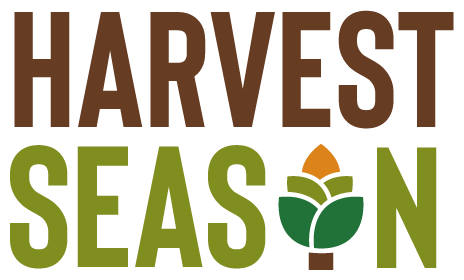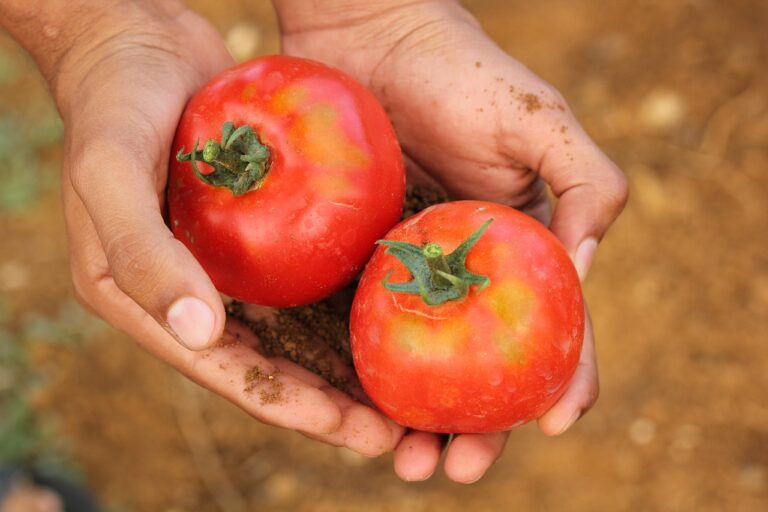Boosting Livestock Profits: 8 Essential Techniques for Kenyan Farmers
Imagine a vast, green landscape stretching before you, dotted with healthy and thriving livestock. As a Kenyan farmer, you strive to make your mark in the agricultural industry and boost your livestock profits. But where do you start?
In this discussion, we will explore eight essential techniques that can help you achieve your goals. From improving animal nutrition to utilizing technology and data analysis, these techniques will provide you with the knowledge and tools to enhance your farming practices and increase your profits.
So, are you ready to take your livestock farming to the next level?
Improve Animal Nutrition
To improve animal nutrition on your farm, consider implementing these essential techniques.
One effective way to enhance the diet of your livestock is by using animal supplements. These supplements are specifically designed to provide additional nutrients that may be lacking in their regular feed. They can help improve the overall health and productivity of your animals. When choosing animal supplements, make sure to consult with a veterinarian to determine the specific needs of your livestock.
Another important aspect to consider is the feeding techniques you use. Feeding your animals in a clean and controlled environment is crucial to prevent the spread of diseases. Additionally, providing a balanced diet that includes a mix of forages, grains, and protein sources is essential for optimal nutrition.
It's also important to ensure that your animals have access to clean and fresh water at all times.
Implement Effective Breeding Practices
Enhancing your farm's breeding practices is crucial for optimizing the genetic potential of your livestock and ensuring the long-term success of your operation. Implementing effective breeding techniques and reproductive management strategies can significantly improve your herd's productivity and profitability. Here are some key techniques to consider:
| Techniques | Benefits | Examples |
|---|---|---|
| Selective Breeding | Improve desired traits in offspring | Breeding cows with high milk production |
| Artificial Insemination | Access to superior genetics | Using elite bull semen for insemination |
| Embryo Transfer | Multiply offspring from top-performing cows | Transferring embryos from high-yielding cows |
| Estrus Synchronization | Improve pregnancy rates and calving season | Administering hormones to synchronize estrus |
| Pregnancy Diagnosis | Identify non-pregnant animals | Ultrasound or rectal palpation for diagnosis |
Enhance Animal Health Management
Improving animal health management is essential for optimizing the overall productivity and profitability of your farm. Animal diseases can have a significant impact on your livestock, causing loss of production, increased mortality rates, and reduced market value. Implementing effective animal disease prevention measures and vaccination programs is crucial to ensure the health and well-being of your animals.
To start, regular veterinary check-ups are essential to identify any potential health issues early on. This allows for timely intervention and treatment, minimizing the risk of disease outbreaks. Additionally, maintaining a clean and hygienic environment for your animals is vital. Regularly clean and disinfect their living areas, provide clean water sources, and properly manage waste to prevent the spread of pathogens.
Vaccination programs are another critical component of animal health management. Consult with a veterinarian to develop a comprehensive vaccination schedule tailored to the specific needs of your livestock. Vaccines can protect your animals against common diseases such as foot-and-mouth disease, brucellosis, and Newcastle disease. Follow the recommended vaccination protocols to ensure optimal protection.
Furthermore, implementing biosecurity measures is crucial to prevent the introduction and spread of diseases. Control access to your farm, limit contact with other livestock, and practice proper quarantine procedures for any new animals brought onto the farm. By minimizing disease transmission, you can safeguard your animals' health and the profitability of your farm.
Optimize Pasture and Forage Management
To optimize pasture and forage management on your farm, consider implementing grazing rotation strategies. This involves dividing your pasture into smaller paddocks and rotating your livestock between them.
Not only does this prevent overgrazing and allow forage to regrow, but it also helps control parasites and spread manure more evenly.
Additionally, focus on improving forage quality by regularly fertilizing, irrigating, and managing weeds to ensure your animals receive the best nutrition possible.
Grazing Rotation Strategies
Implementing effective grazing rotation strategies is crucial for optimizing pasture and forage management on Kenyan farms. Controlled grazing and rotational grazing are two key techniques that can significantly improve livestock profits.
Controlled grazing involves dividing pasture into smaller sections and allowing livestock to graze one section while the others rest and regenerate. This not only prevents overgrazing but also ensures that animals have access to fresh and nutrient-rich forage.
Rotational grazing, on the other hand, involves moving livestock between different grazing areas on a regular basis. This allows for more even utilization of forage, prevents selective grazing, and promotes better pasture growth.
Improving Forage Quality
One effective approach to optimize pasture and forage management for improved forage quality is through the implementation of strategic grazing techniques.
By strategically rotating your livestock across different grazing areas, you can ensure that the forage isn't overgrazed, allowing it to regrow and maintain its nutrient content. This practice also helps prevent soil erosion and compaction, which can negatively affect soil fertility.
Additionally, proper irrigation techniques play a crucial role in enhancing forage quality. Ensuring that your pastures receive adequate water can promote healthy growth and increase the nutritional value of the forage.
Proper soil fertility management, including regular soil testing and appropriate fertilizer application, is also essential for optimizing forage quality.
Streamline Farm Operations
Farmers in Kenya can streamline their operations by implementing efficient techniques and utilizing modern technology. Two key areas to focus on are automated feeding systems and efficient waste management. By incorporating these practices, farmers can optimize their livestock production and increase profitability.
Automated feeding systems offer several benefits to farmers. They help ensure that animals receive the right amount of feed at the right time, reducing wastage and improving overall efficiency. These systems can be programmed to dispense feed in specific quantities, minimizing feed costs and preventing overfeeding. Additionally, automated feeding systems save labor and time, allowing farmers to allocate their resources more effectively.
Efficient waste management is crucial for maintaining a clean and hygienic farm environment. Implementing proper waste management techniques reduces the risk of disease transmission and promotes animal health. Farmers can utilize techniques such as composting, anaerobic digestion, and biofiltration to process and recycle waste. These methods not only help in waste disposal but can also generate valuable by-products such as organic fertilizers and biogas.
Develop a Strategic Marketing Plan
To effectively market their products, Kenyan farmers should develop a strategic marketing plan that incorporates targeted advertising and market research. A well-thought-out marketing strategy can help farmers identify their target audience, position their products effectively, and maximize their profits. Here are four essential steps to develop a strategic marketing plan:
- Conduct market research: Gather relevant information about consumer preferences, market trends, and competitor strategies. This will help you understand your target market better and identify opportunities for differentiation.
- Define your unique selling proposition (USP): Determine what sets your products apart from the competition. This could be the quality, price, or unique features of your livestock. Highlight your USP in your marketing materials to attract potential buyers.
- Set marketing objectives: Clearly define your marketing goals, such as increasing sales by a certain percentage or expanding into new markets. These objectives will guide your marketing efforts and help you measure your success.
- Develop a comprehensive marketing plan: Outline the specific marketing tactics you'll use to achieve your objectives. This may include online and offline advertising, social media campaigns, attending trade shows, or collaborating with local retailers.
Utilize Technology and Data Analysis
To maximize efficiency on your farm, consider implementing precision farming techniques that utilize technology and data analysis.
By utilizing tools such as GPS, drones, and sensors, you can gather valuable data about your land and crops, enabling you to make more informed decisions.
Additionally, leveraging data analysis can help you optimize herd health by monitoring factors such as feed intake, weight gain, and disease outbreaks, allowing you to intervene early and ensure the well-being of your livestock.
Precision Farming for Efficiency
By utilizing technology and data analysis, Kenyan farmers can greatly enhance their efficiency and productivity in precision farming. Here are four important ways that precision farming techniques and smart farming technologies can contribute to this goal:
- Remote sensing: Using drones and satellite imagery allows farmers to monitor crop health and detect issues such as nutrient deficiencies or pest infestations more accurately and quickly.
- Variable rate technology: By analyzing soil data and crop requirements, farmers can apply fertilizers, pesticides, and water in precise amounts and at specific locations, optimizing resource usage and minimizing waste.
- Automated machinery: Utilizing automated machinery for tasks like planting, harvesting, and irrigation reduces labor costs and improves accuracy, resulting in higher yields and lower production expenses.
- Data analytics: By collecting and analyzing data on weather patterns, soil conditions, and crop performance, farmers can make informed decisions regarding planting schedules, crop selection, and resource allocation, leading to more efficient and profitable farming practices.
With the adoption of precision farming techniques and smart farming technologies, Kenyan farmers can achieve higher levels of efficiency, productivity, and profitability in their agricultural operations.
Maximizing Herd Health
With precision farming techniques and smart farming technologies already enhancing efficiency and productivity, Kenyan farmers can now focus on maximizing herd health through the utilization of technology and data analysis.
One crucial aspect of herd health management is to prevent and control herd diseases through a well-planned vaccination schedule. By utilizing technology and data analysis, farmers can ensure that their livestock receives the necessary vaccines at the right time, reducing the risk of disease outbreaks and improving overall herd health.
Technology can help farmers track vaccination records, schedule reminders, and analyze data to identify any patterns or trends in disease occurrence. This data-driven approach enables farmers to make informed decisions, implement preventive measures, and ensure the well-being of their livestock, ultimately leading to higher profits and a sustainable farming operation.
Seek Financial Support and Grants
In order to secure financial support and grants, Kenyan farmers should explore various funding options available to them. Seek financial literacy and explore alternative income streams to ensure a stable financial foundation for your farming venture.
Here are four techniques to help you seek financial support and grants:
- Research agricultural grants: Look for grants specifically tailored to the agricultural sector. Government agencies, NGOs, and international organizations often offer funding opportunities for farmers. Stay updated on grant deadlines and eligibility criteria.
- Collaborate with agricultural organizations: Join farmer associations or cooperatives that provide financial support and grants to their members. These organizations often have programs designed to assist farmers with funding for various agricultural projects.
- Engage with microfinance institutions: Microfinance institutions specialize in providing small loans and other financial services to farmers and rural entrepreneurs. Explore the options available and assess their interest rates, repayment terms, and eligibility requirements.
- Leverage technology: Utilize digital platforms and mobile applications that provide access to financial services for farmers. These platforms often offer loans, savings accounts, and insurance products tailored to the needs of farmers. Research and choose the platform that best suits your requirements.

